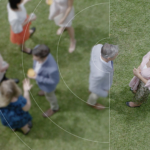J. Thomas Roland Jr, MD; Bruce J. Gantz, MD; Susan B. Waltzman, PhD; Aaron J. Parkinson, PhD
Objective: To demonstrate the long-term benefits of implantation in patients with high-frequency sensorineural hearing loss, this report provides 5-year follow-up on a group of implant recipients who were subjects of the Cochlear™ Nucleus® Hybrid™ L24 Implant System* pivotal clinical study.
Methods: The results of three related clinical studies were compiled to provide outcome data after 1, 3, and 5 years of implant use in a group of subjects who presented with preoperative high-frequency hearing loss and were implanted with a Nucleus Hybrid L24 (Cochlear Ltd., Sydney, Australia) cochlear implant. A subset of the 50 adult subjects (N532) who participated in the Hybrid L24 pivotal Investigational Device Exemption (IDE) completed comprehensive evaluations at 12 months postactivation, 3 years postactivation, and then as part of a postapproval study at 5 years postactivation. Testing included audiometric, speech perception, and subjective satisfaction measures.
Results: Mean unilateral speech perception performance was significantly improved at all postoperative intervals compared to preoperative best-aided results and has remained stable to 5 years postactivation. Ninety-four percent of subjects had measurable hearing, and 72% continued to use electric-acoustic stimulation in the implanted ear after 5 years of implant use. Subjective satisfaction results support objective performance improvements.
Conclusion: Results demonstrate long-term success of patients with high-frequency hearing loss following Hybrid L24 (Cochlear) cochlear implantation. Benefits include speech perception abilities significantly better than those in the preoperative best-aided condition, with additional benefit in those using electric-acoustic stimulation in the implanted ear.
Key Words: Electric-acoustic stimulation, cochlear implant, high-frequency sensorineural hearing loss, hybrid cochlear implant, hearing preservation, long-term outcomes.
Level of Evidence: 2b.




